Is this what Singapore will look like in the future?
William Koh talks about his series, "Neo Singapore 2085," and how science fiction films, Chinese characters and the city itself has led to the imagining of a future Singapore.
A few weeks ago, William Koh's futuristic digital renderings of Singapore made its rounds on social media. Here, the freelance concept artist talks about his motivation behind his personal project, "Neo Singapore 2085," how science fiction movies influenced his work and why some parts of Singapore might become more industrial in the future.
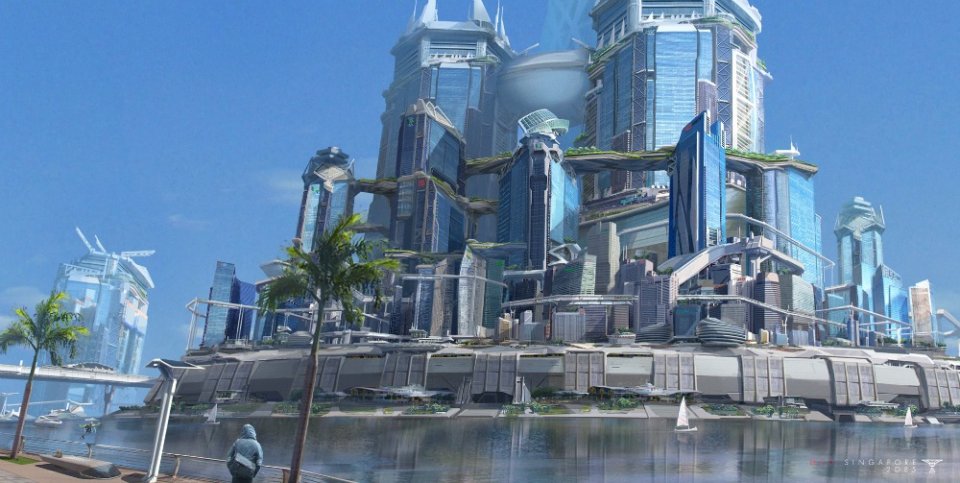 Marina One
Marina One
What got you into concept art?
I studied graphic design in Lasalle College of the Arts and had experience working for several companies in Singapore as a graphic designer. At some point, I decided to pursue a career in concept art as I've always love to draw and have a passion for films and games. Currently I am working full-time as a concept artist for a game company in Singapore and freelancing in my spare time.
What was the motivation or inspiration for this project?
There are many sci-fi city concepts in the entertainment industry but none on Singapore. This sparked my interest to start a fresh concept using Singapore as a base. S2085 is my take on an alternate near futuristic city of Singapore. The main focus of this personal project was to include architecture, iconic landmarks, and world building designs with some narrative.
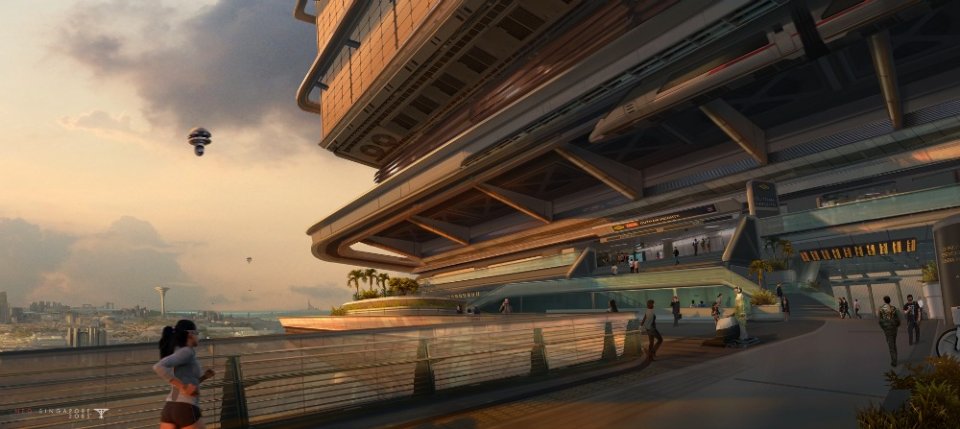 Outram Heights - Sky Interchange
Outram Heights - Sky Interchange
Some images show Singapore becoming more and more industrial. What’s your take on that?
The idea of an alternate Singapore stems from the advancing changes in technologies and power source bringing changes in the city layout and overall architecture. For example, Marina One, which is one of the financial hubs in the financial district embodies the idea of Singapore being the forefront of a global communication hub in Asia. These financial hubs have complex transportation systems integrated through buildings and connecting platforms in the upper tiers much like the Marina Bay Sands but in a wider urban scale. Its architecture has a corporate and industrial look which compliments the natural progression of advancing technology.
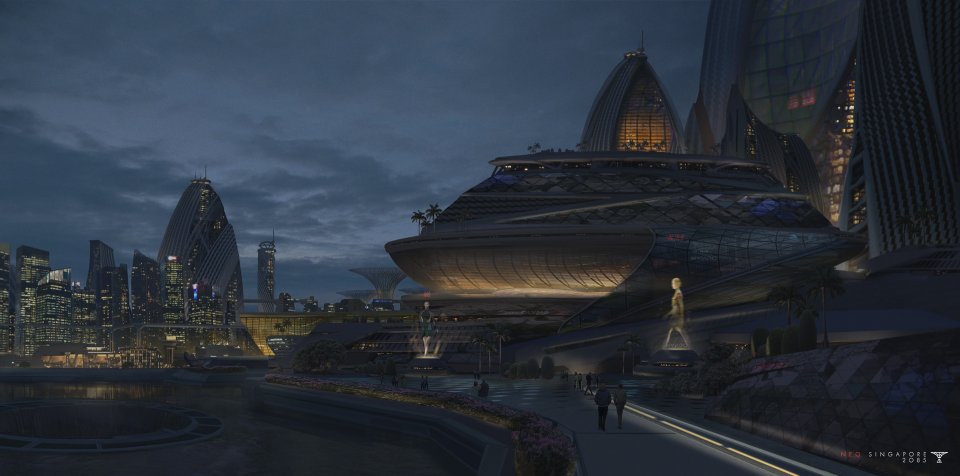 Marina Bay Shopping District
Marina Bay Shopping District
There is a very sci-fi element to this work. Are there any books or movies that you drew inspiration from?
My biggest inspiration for this project are films such as Bladerunner, Akira and Ghost in the Shell. Futuristic worlds that are different yet believable. I was looking at architecture trends and movement, looking back at how buildings in Singapore have progressed and imagining where it might lead to in the future. Zaha Hadid and Santiago Calatrava are some of the architects whom I was inspired by.
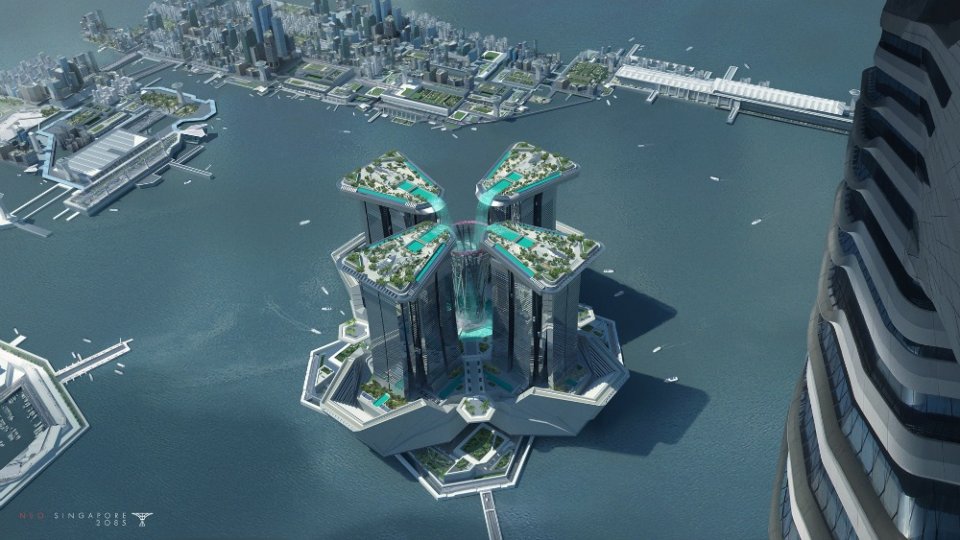 Gardens in the Bay
Gardens in the Bay
Although it looks very futuristic, some of the elements of buildings draw from what already exist in Singapore. How much do you think Singapore will change in the future?
It is a balancing act to design something futuristic yet familiar, estimating the extent of change and retaining the essence of Singapore's identity. However it is difficult to predict how much Singapore will change in the future as we currently live in an exciting time where technologies will exponentially affect how we live and work in the next 10-20 years, bringing about possible changes in the city as well. We can look back on changes over the past 50 years and multiply that change about 2 to 3 times fold as a gauge for the future.
6. How do you plan your work? Do you start with a sketch, or an idea?
Planning for this personal project, I was already set in creating a sci-fi Singapore. I did research on local issues such as overcrowding, floods, etc, architectures movements, upcoming technologies that would change our daily lives, and urban planning on a micro and macro scale. Gathering references allowed me to come up with more ideas to design on the world building and refine my narratives. When I have decided on the core design of my world and the issues I want to solve, I would start sketching my scenes in thumbnails before refining to a final draft. I would also create a spline for my project from start to end, to have an overview and time management for the project.
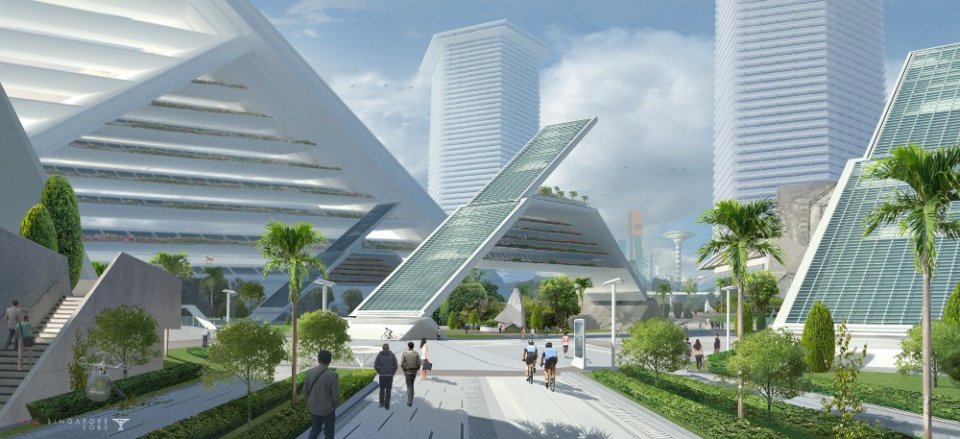 People's Park Residence
People's Park Residence
Which is your favorite piece?
My favorite piece is the People's Park Residence. For this scene I wanted to work on an executive residential area. The function of this architecture is housing and the shape comes from the Chinese character "人", and the three identical buildings form the character "众", signifying masses of people. This feels like a unified design because the design, function, narrative and underlying meaning works well together. For aesthetics I kept the structures in simple shapes. This is a minimalistic and clean approach in contrast to the current people's park.
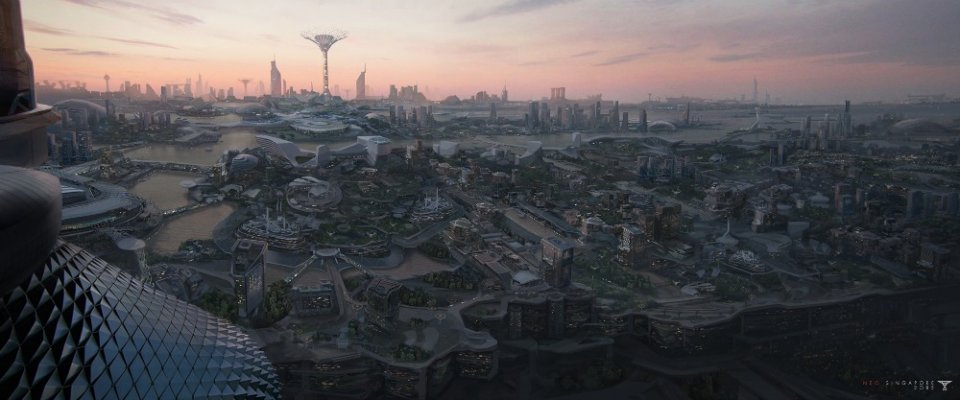 Scape 1
Scape 1
Some elements don’t really change, like the Supertrees in Gardens by the Bay. Tell us about that.
The Supertrees in gardens by the bay is iconic and exclusive in Singapore. I retain the shape to keep the feeling of Singapore but changed the function of it. Currently these are just background images to my scenes but I will be elaborating in phase 2 of my project.
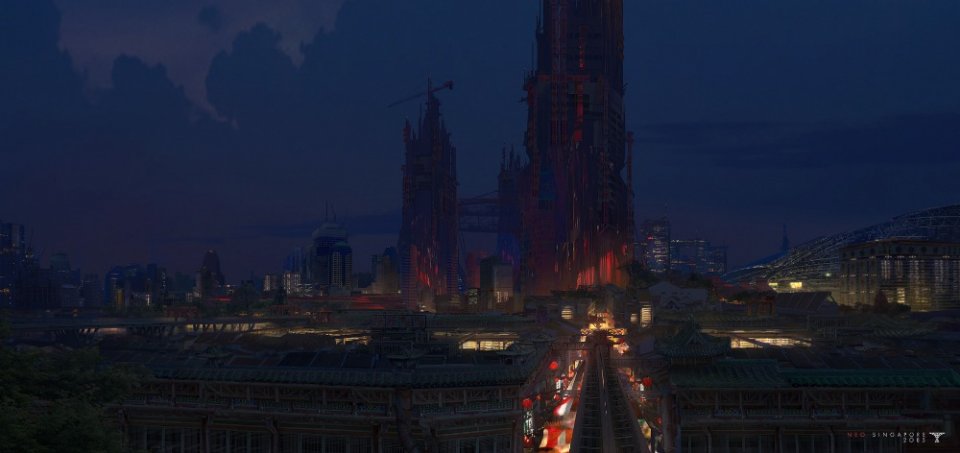 Chinatown
Chinatown
What are some of the necessary traits or skills you need to be a good concept artist?
From my experience, you need to have strong fundamental skills in perspective drawing, anatomy, painting, color theory and design principles. Having a good knowledge and visual library helps to generate more ideas and better content for your concepts. Some examples are architecture, history, culture, mechanics, and functionality. Study films and animations, observe how directors and cinematographers composite their shots, their choice of lighting, colour and mood to enhance their storytelling. Have a good pipeline to your work by being updated new tools, 2D and 3D softwares. Always keep practicing on your craft.
Advertisement